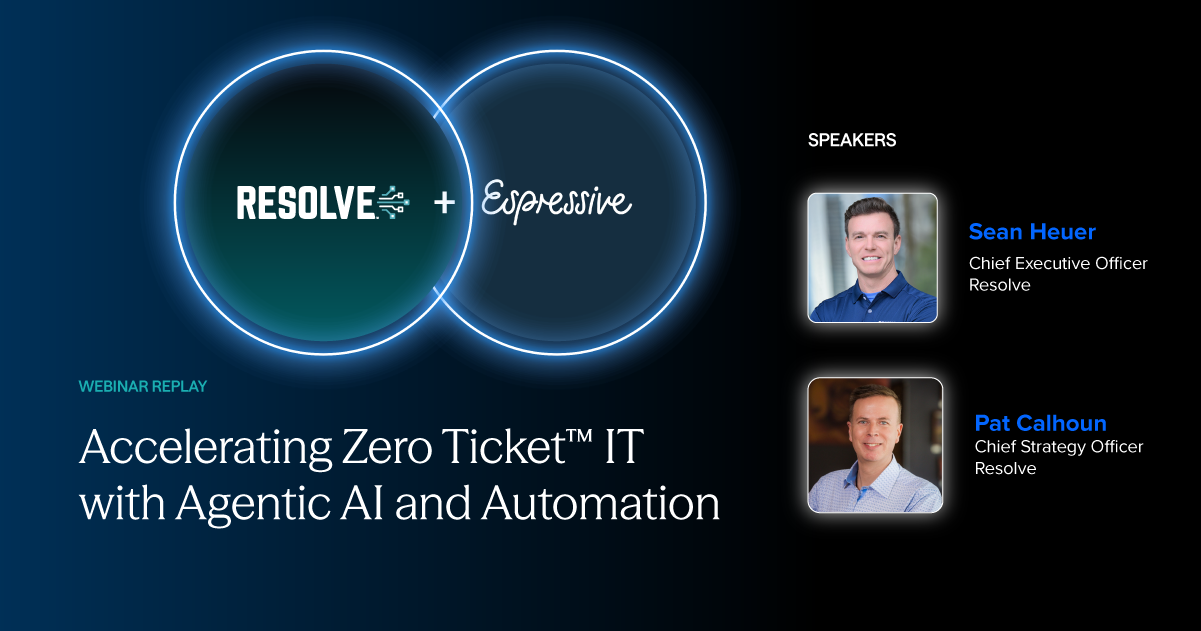
The Top 5 Benefits of Automated Dependency and Discovery Mapping (DDM)
Subscribe to receive the latest content and invites to your inbox.
In order to manage the impact that every entity has on your IT environment, an accurate Configuration Management Database (CMDB) is essential. This tool provides the visibility you need to quickly execute tasks like daily management, determining how to fix an outage, and planning major initiatives like cloud migrations or application changes.
To create and maintain an accurate CMDB, automated dependency and discovery mapping (DDM) is key. An automated DDM makes it simple to discover all your entities and how they connect so you can optimize your service and technology performance. Here are five benefits an automated DDM solution can bring to your CMDB management process.
1. Full visibility
You can't control what you can't see. If there are blind spots in your CMDB due to manual processes, every change you make carries an unknown risk.
With an automated DDM solution, you can automatically discover all the physical and virtual network, compute, and storage configuration items in your environment. This inventory includes critical details like configuration, patch status, IP address, and more. This helps you quickly find any asset in your entire IT environment based on any input you choose, helping you react quickly to issues like a vital patch release.
In addition, an automated DDM solution maps the relationships between each entity so you can understand the impact every entity has on application flows, application services, and other processes. This helps you understand the downstream impact of changes so you can appropriately prepare when undertaking maintenance, overseeing a migration, or replacing an asset.
2. Greater efficiency and accuracy
In today's market, there simply aren't enough IT staff available to do everything. That means you need to use automation to maximize the time of the IT staff you do have so they can focus on higher-value work.
An automated DDM solution takes the time-consuming work of creating inventories and mapping dependencies out of the hands of humans. This helps eliminate hundreds or even thousands of hours a year in manual labor that your IT staff can now spend improving your IT operations.
In addition, a manual process is prone to human error. By automating DDM, you can ensure that your CMDB always has accurate information that reflects the most up-to-date discovery and dependency details.
3. Decrease MTTR
The lower your mean time to resolution (MTTR), the faster you can respond to a service outage and get people back to work.
An accurate CMDB fueled by an automated DDM ensures that IT staff can leverage the latest inventory information to quickly pinpoint the source of an outage so they can make a quick decision about how to fix it. Because every entity also has every dependency mapped, IT staff can also see the upstream and downstream impact of all assets. This can help them identify the root cause of an outage or anticipate any knock-on effects of their proposed solutions.
4. Increase performance
Once you achieve CMDB accuracy through the use of an automated DDM, you can use this insight to inform your change management strategy, helping you identify the 20% of the projects that can generate 80% of your performance improvement so you can significantly improve application and infrastructure performance and uptime.
By prioritizing projects, you can continue to help your business scale and introduce new IT services without the need for additional IT staff or resources. At the same time, you'll be able to meet the growing business expectations of today's IT operations, ensuring that IT is seen as a strategic partner that can create new opportunities.
5. Reduce costs and risks
By providing a complete list of all assets, an automated DDM delivers a CMDB that makes you more capable of making data-driven decisions. This visibility makes it simple to quickly identify assets that are at their end-of-life so you can proactively replace them with high-performing units.
You'll likely also discover many assets that are no longer business-critical, allowing you to take them out of commission instead of spending money to maintain or replace them. Because you have a complete view of each asset's dependencies, you can ensure that any asset you remove won't impact a critical business application downstream.
Meet Resolve Insights
As a leading automated dependency and discovery mapping solution, Resolve Insights makes it easy to handle the complexity of dynamic multi-vendor, multi-domain environments while scaling to hundreds of thousands of devices.
With Resolve Insights, you get the real-time visibility you need to quickly troubleshoot problems, make changes with confidence, perform capacity planning, and ensure business continuity. To see DDM in action, request a personalized demo.






